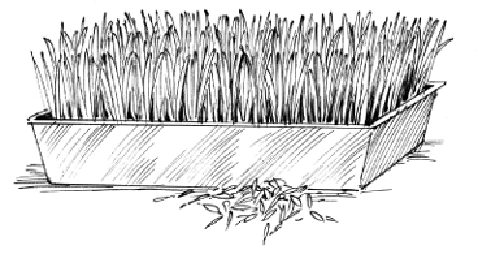Agriculture Reference
In-Depth Information
Melons
Muskmelon, watermelon, and honeydew are consumed at warp speed by the flocks on
our farm. They eat all parts: seeds, flesh, and rind. The older birds seem to recognize the
wheelbarrows of watermelons, and the young soon learn that all the fowl on the farm
rush to the edges of their pens when the melons go by. Much as children chase after an
ice cream truck, I have had several hundred turkeys follow after me when they see the
watermelons in the wheelbarrow.
Melon seeds are rich in protein and oils and the flesh helps to flush birds' digestive
tract. Given in moderation, watermelon provides an excellent feed supplement. Think
of them as a dessert item, not the main course. It will make you very popular with your
birds.
Crops for Forage
Several years ago we put together a mixture of seeds to plant in our pens for young
poultry to forage on as they were growing. This is a tradition we have upheld. I typically
plant the seed on the ground inside the pens when the chicks are hatched and then turn
the fowl out onto them five to six weeks later. The mix contains millet for a fast-growing
grass; Essex rape for a deep green leafy source; and mustard for thin and tasty greens.
This spring mix grows rapidly and provides tasty forage and a bit of shade for young
growing fowl.
A homemade oat sprouter
In early August, we plant a fall mix of millet, Essex rape, turnips, and winter radishes.
Of course we're planting these in empty pens that the birds aren't moved into until six
weeks or so of age. This mix provides opportunity for the birds to dig down and eat
some of the roots as they develop. You can design a mixture that fits your needs and

